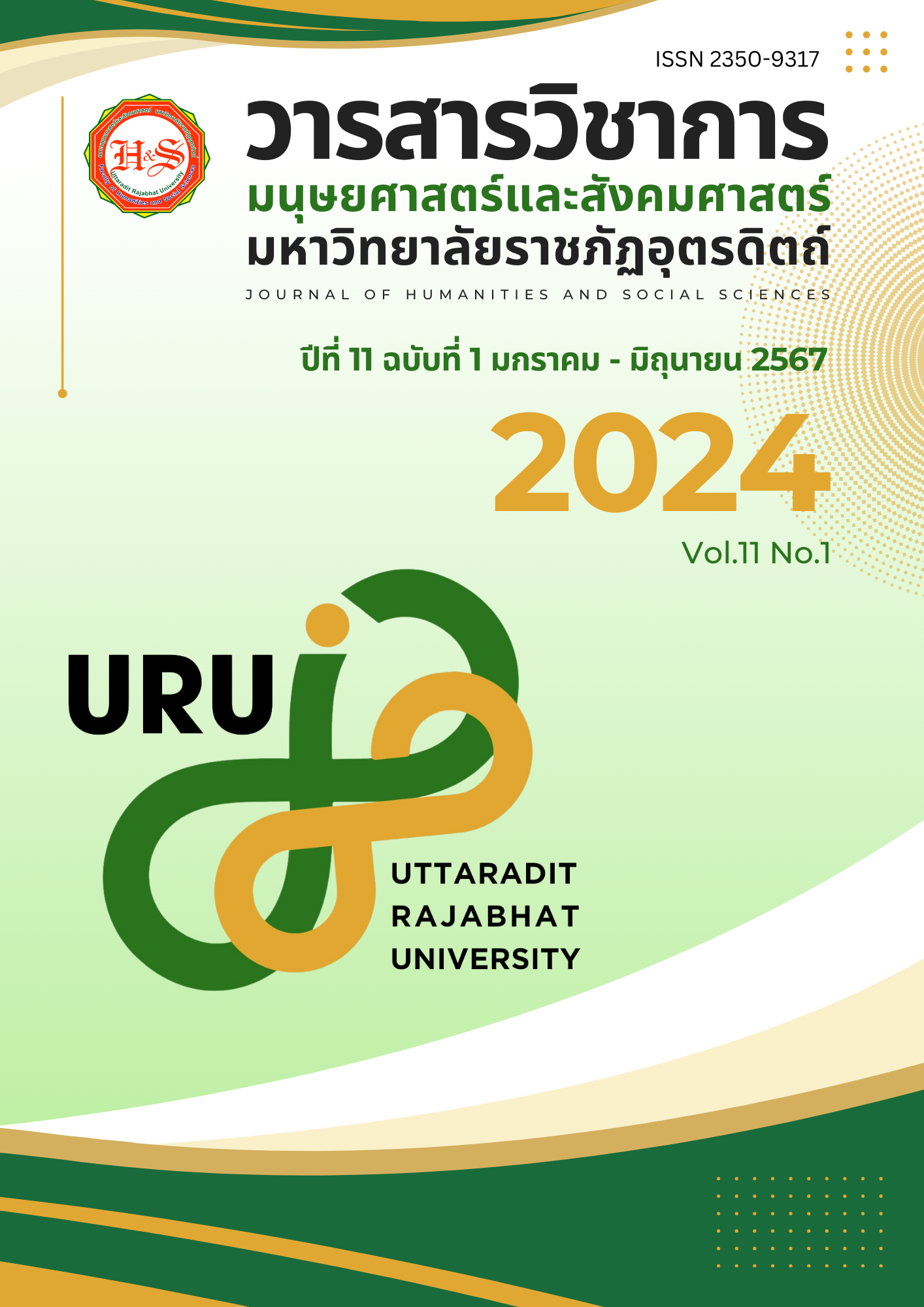Legal Measures Concerning to Flood Risk Reduction
Keywords:
Legal Measures, Risk, FloodAbstract
This study has the objectives: To study laws related to flood risk reduction in Thailand. and public participation in reducing flood risk. To analyze and compare legal problems that determine powers and duties that are obstacles to reducing flood risk in Thailand. It is comparable to the flood risk reduction laws of the Republic of France, the United States, and Japan and to suggest guidelines for improving and amending laws related to flood risk reduction that are appropriate for Thailand. By studying theories, concepts, and legal principles for flood prevention in Thailand. Using qualitative research methods It includes document research, interviews, and focus groups.
The results showed that: Current laws regarding flood risk reduction in Thailand It is not yet effective in being applied as it should be. Because there are still various problems and obstacles in reducing flood risk. Due to the presence of many departments There are many laws governing water management in Thailand. That has resulted in the country's water management not being as efficient as it should be and causing damage to people within the country. Because there are still gaps in the law, there is no unity, and it is not consistent with the theories and principles of the state's mission or the provision of public services. In addition, the Water Resources Act of 2018 has provided for the establishment of the National Water Resources Committee (NHC), but the said law does not specify a time period for preparing the master plan as to when it will be completed. Therefore causing a delay in bringing the said plan into effect to reduce flood risk. In addition, river basin committees for 22 river basins have been established, with the duties and authority to prepare plans to prevent and solve flooding. But the law does not specify a time period to complete the flood prevention and resolution plan. This makes the enforcement of the Water Resources Act 2018 unable to effectively reduce flood risks. n addition, water resource management in Thailand has problems in allowing people to participate in policy setting without the people being able to express their opinions. This is because the Constitution of the Kingdom of Thailand, B.E. 2017, does not give the private sector the right to participate in setting policy guidelines for conservation. Maintain and utilize natural resources and the environment.
References
ขนิษฐา ปาลโมกข์. (2557). การมีส่วนร่วมของชุมชนในการป้องกันมหาอุทกภัย ศึกษาเทศบาลนครนนทบุรีและเทศบาลนครปากเกร็ด จังหวัดนนทบุรี (รายงานการวิจัย). สำนักงานการวิจัยแห่งชาติ.
ชาญวิทย์ ชัยกันย์. (2558). ความรับผิดของรัฐเกี่ยวกับการจัดการภัยพิบัติ : ศึกษาเปรียบเทียบกรณีของญี่ปุ่นและไทย. สำนักงานศาลปกครอง (รายงานการวิจัย). สำนักงานการวิจัยแห่งชาติ.
บรรเจิด สิงคะเนติ. (2552). หลักพื้นฐานของสิทธิเสรีภาพและศักดิ์ศรีของความเป็นมนุษย์. (พิมพ์ครั้งที่ 3). สำนักพิมพ์วิญญูชน.
พระราชบัญญัติการป้องกันและบรรเทาสาธารณภัย พ.ศ. 2550. มาตรา 20. (2550, กันยายน 9). ราชกิจจานุเบกษา, 124 (52ก), 10.
พระราชบัญญัติทรัพยากรน้ำแห่งชาติ พ.ศ. 2561 (2561, ธันวาคม 28). ราชกิจจานุเบกษา, 135 (113ก), 50
สถาบันวิจัยและให้คำปรึกษาแห่งมหาวิทยาลัยธรรมศาสตร์. (2547). รายงานฉบับสุดท้าย “โครงการปรับปรุงกฎหมายเกี่ยวกับทรัพยากรน้ำและจัดทำร่างพระราชบัญญัติทรัพยากรน้ำ”. กระทรวงทรัพยากรธรรมชาติและสิ่งแวดล้อม.
สุนทรชัย ชอบยศ. (2555). “อุทกภัย : มหาภัยพิบัติที่ท้าทายการจัดการ(วิกฤต)ของรัฐไทย,” วารสารรัฐสภาสาร, 60(1), 24.
Downloads
Published
How to Cite
Issue
Section
License
Copyright (c) 2024 Journal of Humanities and Social Sciences Uttaradit Rajabhat University

This work is licensed under a Creative Commons Attribution-NonCommercial-NoDerivatives 4.0 International License.
บทความเป็นลิขสิทธิของคณะมส. มรภ อต.



